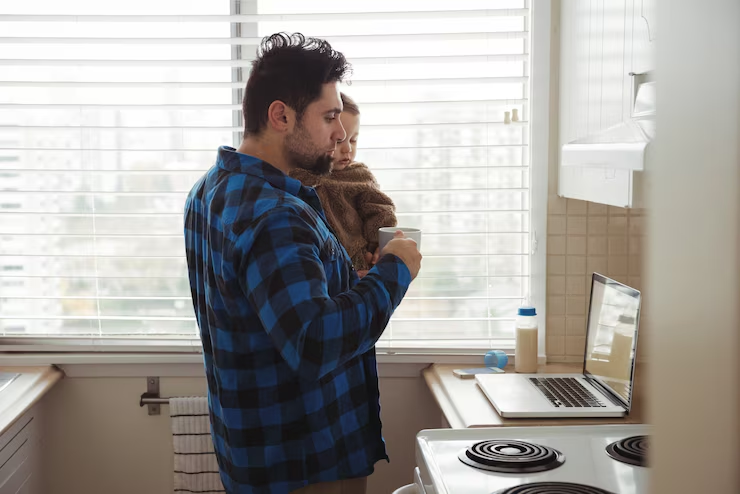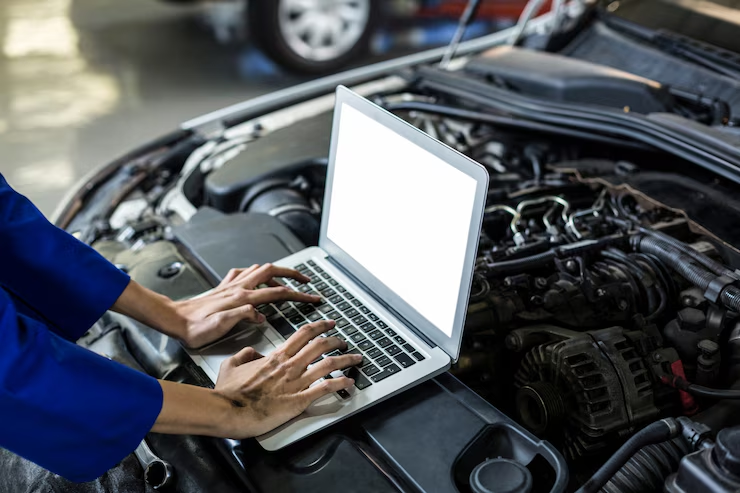Introduction
Your cars cooling system plays a vital role in keeping the engine. Maintain Your Cars Cooling System Running at an optimal temperature. Without proper cooling the engine can overheat causing severe. Damage and costly repairs. Regular maintenance of the cooling system. Helps prevent breakdowns improves fuel efficiency and prolongs the life of your vehicle.
In this guide well cover everything you need to know about maintaining. Your cars cooling system from checking coolant levels to flushing the radiator.
Understanding Your Cars Cooling System
Before diving into maintenance tips its important to understand. The basic components and how the cooling system works.
Key Components
- Radiator Dissipates heat from the coolant.
- Coolant (Antifreeze) Absorbs heat from the engine.
- Water Pump Circulates coolant through the system.
- Thermostat Regulates coolant flow based on engine temperature.
- Radiator Fan Helps cool the radiator when the car is idle or moving slowly.
- Hoses and Clamps Carry coolant throughout the system.
How It Works
The coolant absorbs heat from the engine and travels to the radiator. Where it cools down before circulating back to the engine. The thermostat controls the flow to maintain an ideal engine temperature.
Signs of Cooling System Problems
- Engine Overheating The temperature gauge rises above normal.
- Coolant Leaks Puddles of coolant under the vehicle or visible leaks around hoses.
- Sweet Smell Coolant has a sweet odor; may indicate a leak.
- Steam from the Hood Sign of overheating or coolant boiling over.
- Frequent Need to Refill Coolant Indicates leaks or system inefficiency.
Regularly Check Coolant Levels and Condition
Check Coolant Levels
- Wait until the engine is cold.
- Open the hood and locate the coolant reservoir (usually translucent plastic).
- Check the level against the MIN and MAX marks.
- If low add the correct type of coolant mixed with distilled water as recommended in your owners manual.
Inspect Coolant Condition
- Coolant should be clear or have a bright color (green red orange depending on type).
- If it looks rusty dirty or has debris its time for a coolant flush.
Flushing and Replacing Coolant
Over time coolant degrades and becomes contaminated losing its ability to regulate temperature and prevent corrosion.
When to Flush
- Every 30000 to 50000 miles or as per your vehicles manual.
- If coolant looks dirty or rusty.
- After a major repair involving the cooling system.
How to Flush
- Drain the old coolant by opening the radiator drain valve.
- Flush the system with distilled water to remove residue.
- Refill with the recommended coolant mixture.
Inspect and Replace Hoses and Belts
Hoses carry coolant between components and need to be flexible and leak free.
Inspection Tips
- Look for cracks bulges or soft spots.
- Check clamps for tightness and corrosion.
- Squeeze hoses to check for firmness (too soft or hard means replacement needed).
Replace if
- Hoses show signs of wear or leaks.
- Belts driving the water pump are cracked or frayed.
Monitor the Thermostat and Water Pump
Thermostat
- Controls coolant flow based on engine temperature.
- If stuck closed, the engine overheats.
- If stuck open engine runs too cool wasting fuel.
Water Pump
- Circulates coolant.
- Signs of failure coolant leaks from the pump noisy bearing or overheating.
Check Radiator and Cooling Fans
Radiator
- Inspect for physical damage debris and corrosion.
- Clean the exterior to maintain airflow.
Cooling Fans
- Ensure fans turn on when the engine heats up.
- If fans fail the engine may overheat at idle.
Use the Correct Coolant Type
Different vehicles require specific coolant types based on chemical composition.
- Use manufacturer recommended coolant (check owners manual).
- Avoid mixing different types of coolant as it can cause sludge buildup.
Tips for Preventing Cooling System Problems

- Avoid mixing coolants.
- Never open the radiator cap when the engine is hot.
- Keep an eye on the temperature gauge during long drives.
- Schedule regular maintenance and inspections.
Visit a Mechanic
- Persistent overheating despite regular checks.
- Coolant leaks that you can’t locate or fix.
- Strange noises from the water pump or radiator.
- Issues with the thermostat or fan operation.
Safely Check and Top Up Coolant Levels
Checking your coolant level might seem simple but its important to do it correctly to avoid injury or damage.
- Safety First Always check coolant when the engine is completely cool. Opening the radiator cap when hot can cause boiling coolant to spray out leading to serious burns.
- Finding the Coolant Reservoir Most modern cars have a translucent overflow tank with MIN and MAX level marks. If you dont see one consult your owners manual to locate the radiator cap and reservoir.
- Top Up Procedure Use a 50 50 mixture of coolant and distilled water unless your vehicle requires a different ratio. Avoid using plain water which can cause corrosion and reduce boiling point protection.
- Avoid Overfilling Filling above the MAX line can cause overflow and damage the system, so add coolant slowly and carefully.
Understanding Coolant Types and Their Benefits
Coolants are not all the same and choosing the right one for your car is vital.
- Inorganic Acid Technology (IAT) Traditional green coolant commonly used in older vehicles. It protects well but requires frequent changes.
- Organic Acid Technology (OAT) Typically orange or red OAT coolants last longer and reduce corrosion but are not always compatible with all engines.
- Hybrid Organic Acid Technology (HOAT) A mix of both IAT and OAT usually yellow or turquoise offering balanced protection and longer life.
- Silicate Free and Phosphate Free Coolants Found in some newer vehicles to protect aluminum engines without harmful chemicals.
Always check your manual or consult a professional to pick the right coolant type for your cars make and model.
Often Should You Service Your Cooling System

The recommended cooling system maintenance intervals vary by vehicle and usage but generally include
- Coolant Flush Every 30000 to 50000 miles or every 2 5 years whichever comes first.
- Coolant Level Check At least twice a year or before long trips.
- Hose and Belt Inspection Every oil change or at least twice a year.
- Thermostat and Water Pump Check When you notice overheating or as part of major service intervals.
If you frequently drive in extreme temperatures or stop and go traffic consider more frequent checks to prevent overheating.
Common Cooling System Problems and How to Fix Them
Knowing common problems and their solutions can help you troubleshoot and decide when to call a mechanic.
- Coolant Leaks Usually caused by damaged hoses radiator cracks or a failing water pump. Minor leaks can be patched temporarily with sealants but replacement is recommended.
- Overheating Could be caused by low coolant stuck thermostat malfunctioning radiator fan or clogged radiator. Check these components systematically.
- Radiator Corrosion or Blockage Caused by old or wrong coolant requires flushing or radiator replacement.
- Air Pockets in System Trapped air can cause hot spots and overheating. Bleed the system to remove air after refilling coolant.
Bleed Air From the Cooling System
Air trapped inside the cooling system can cause uneven cooling and overheating. Some cars have a bleed valve or bleeder screw near the thermostat housing.
- Locate Bleed Valve Consult your vehicle manual.
- Open Bleed Valve When adding coolant open the valve to allow air to escape as coolant fills.
- Run the Engine With the radiator cap off start the engine and let it warm up. Watch for air bubbles escaping.
- Close Bleed Valve Once coolant flows steadily with no air bubbles close the valve and replace the cap.
Bleeding air properly ensures full coolant circulation and prevents engine hot spots.
Role of Radiator Cap and Pressure in Cooling System
The radiator cap is a small but crucial component maintaining system pressure.
- Pressure Regulation The cap keeps the system under pressure (usually 15 psi) which raises the boiling point of the coolant and prevents boiling over.
- Cap Failure A faulty cap can cause coolant loss overheating and air entering the system. Symptoms include coolant leakage around the cap or frequent need to top up coolant.
- Replacement Radiator caps are inexpensive and easy to replace its a good maintenance step if you experience cooling issues.
Seasonal Cooling System Maintenance Tips
Your cars cooling system needs special attention depending on the season.
- Summer Check coolant levels before hot weather hits. Ensure the radiator fan works well to prevent overheating in traffic jams. Keep the AC condenser clean as it shares airflow with the radiator.
- Winter Use coolant with antifreeze properties to prevent freezing. Check for leaks carefully because cold weather can worsen cracks. Warm the engine gently to prevent thermal shock.
Seasonal checks help adapt the cooling system to changing environmental conditions.
Driving Habits Affect Cooling System Health
Certain driving styles and conditions can strain your cooling system
- Stop and Go Traffic Reduced airflow at low speeds can cause overheating. Use your heater in extreme cases to reduce engine temperature temporarily.
- Towing Heavy Loads Extra engine load produces more heat requiring a fully functional cooling system.
- Off Road Driving Mud and debris can clog the radiator reducing cooling efficiency. Regular cleaning is essential.
Adjust maintenance frequency based on how and where you drive your vehicle.
DIY Troubleshooting and When to Seek Professional Help
While many maintenance tasks are DIY friendly some situations require professional expertise
- DIY Tasks Checking and topping coolant flushing the radiator inspecting hoses replacing the radiator cap cleaning the radiator exterior.
- Call a Mechanic If You encounter persistent leaks suspect a faulty thermostat water pump or radiator damage or the engine overheats repeatedly.
Mechanics have specialized diagnostic tools like pressure testers and infrared thermometers to pinpoint issues accurately.
Recommended Tools and Products for Cooling System Maintenance
Having the right tools makes maintenance easier and safer
- Coolant Tester or Refractometer Checks coolant concentration and condition.
- Drain Pan To catch old coolant during flushes.
- Funnel For mess free coolant refills.
- Pressure Tester For leak detection (usually used by professionals).
- Coolant Flush Kit Helps flush out old coolant effectively.
- Replacement Hoses and Radiator Cap Keep spares handy if needed.
Always use quality products recommended for your cars specifications.
Conclusion
Maintaining your cars cooling system is crucial to ensure your engine runs smoothly and avoids costly repairs. By regularly checking coolant levels. Flushing the system inspecting hoses and belts and paying attention to warning signs you can extend. The life of your vehicle and enjoy a trouble-free driving experience.
Remember prevention is better than cure. A little time and care invested in your cooling system today can save you from major headaches tomorrow.

